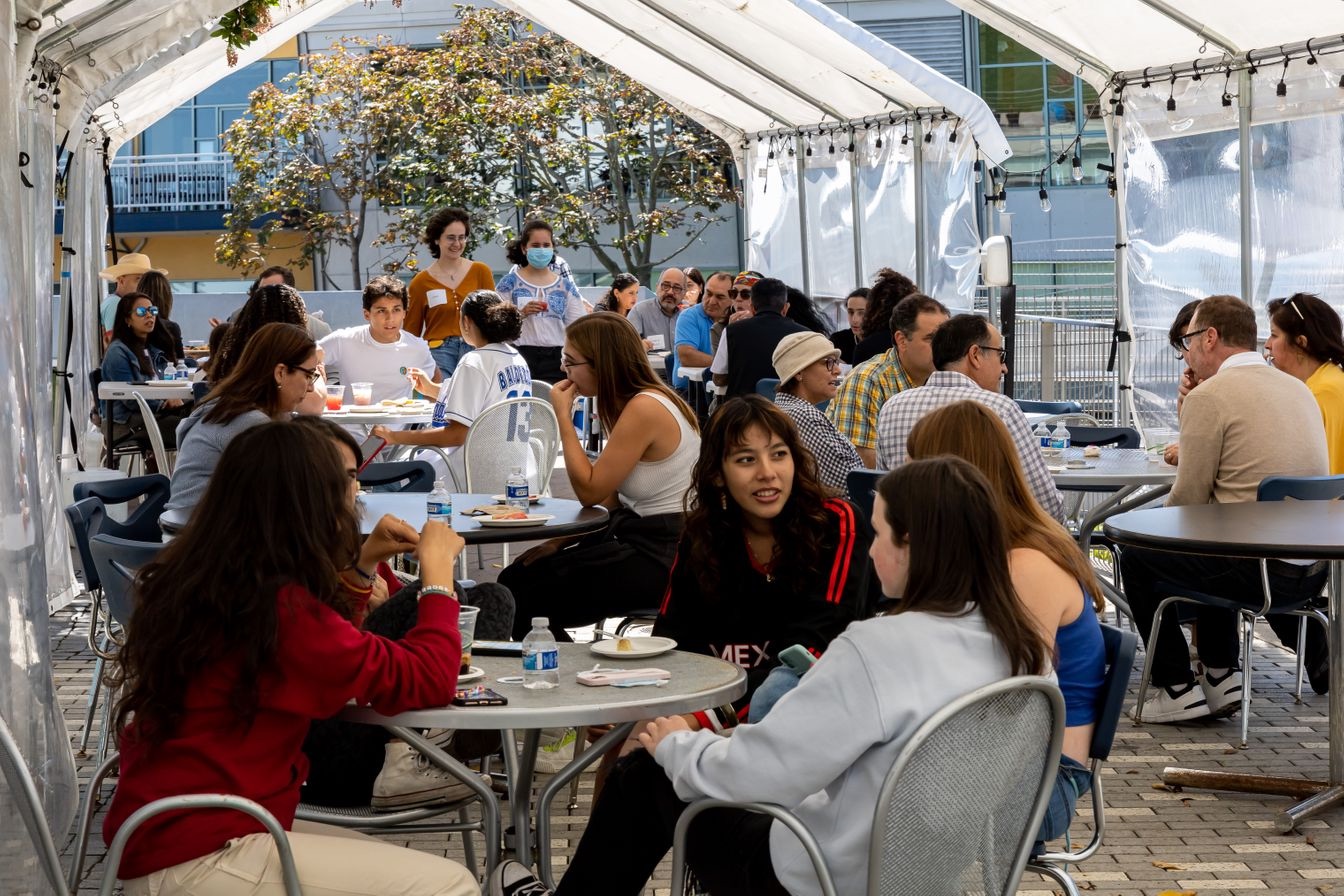The Lick-Wilmerding High School Admissions Office strives to create a more diverse LWHS student body by consciously providing access to populations that are currently underrepresented in the school community.
According to co-Associate Director of Admissions Elizabeth Tackett ’08, LWHS works towards “factoring in diversity of all forms,” which means looking at school type, geographical location, race and ethnicity along with other key identifiers like socio-economic status and gender identity while considering prospective students. For the 2022-2023 school year, the student body is made up of students from over 71 zip codes and 150 different middle schools which includes 66% self-identifying as BIPOC.
Every summer before the admissions season officially begins, the Admissions Office regroups and asks themselves where their “blind spots” are in order to improve their process in the coming school year. Referred to as their ‘reset month’ by Tackett, July provides them designated time to strategize and evaluate how LWHS can better represent their Bay Area and national communities.
This past summer, the Admissions Office realized that parochial and public school outreach was an area that required additional focus.
In order to do this, the department scheduled more in-person visits to parochial and public schools and converted independent school visits to an online format instead. Given their limited time and energy to physically present at middle schools across the Bay Area, they felt that it was less necessary to prioritize students who they already knew would apply to LWHS, thus providing more access to those who historically have not.
As an alumnus, Tackett described her personal experience applying to LWHS and the department’s intentions with prioritizing public and parochial school applicants. “Coming from a public school myself, no one came to my school to talk about Lick,” Tackett said. “I think that for us, it’s the question of ‘how do we keep talking about Lick in the broader community?’”
For Lorenzo Lopez ’26, coming to LWHS from the public school Benjamin Franklin Intermediate in Daly City has been a big adjustment. “In a way, it reminds me of going from the outside where it’s a cold night … and you enter a warm room. Then it’s like that shock when you enter the new building,” Lopez said.
Despite the distance from his home in Daly City, Lopez decided to apply to LWHS because of the richer resources that he and his family believed would be available to him as a student compared to his previous school district. Comments that his mother read online described LWHS as a “phenomenal school” and stated that students who attended would become “set for life.” As a Latinx and public school family, the school suddenly became an opportunity for Lopez’s success which they were unable to ignore.
As an Admissions Associate, Deja’ Haley has witnessed BIPOC families such as Lopez’s struggle with gaining access to institutions like LWHS, which can embody an ivory tower for some. “[Many families] feel like they don’t have the resources or the access to spaces like this and just letting them know ‘No, you do have access and there are people here in this office who are willing to work with you throughout the entire process,’” is a vital aspect of her job.
Increasing application accessibility for BIPOC applicants is a constant theme for the LWHS Admissions Department as a whole, which has been especially apparent by the events they have provided for this year’s admissions season. Notably, they hosted an open house exclusively in Spanish for families on campus and facilitated racial affinity nights on Zoom, both for the second consecutive year.
Since Admissions Associate Gaby Perez joined the department in 2021, she has been aware of the additional challenges that a language barrier places on families while also undergoing the stressful high school admissions process. “When information is not being given in a language that they speak at home, it’s hard for an eighth grader to translate that information to their parents, and the buy-in is a little more difficult,” said Perez.
Coordinated by Perez, the Spanish open house operates similarly to LWHS’s traditional open house, providing demos of classes and presentations—except solely in Spanish. It was hosted for the first-time last year on Zoom and had an overwhelmingly positive impact on families, resulting in each of the 50 attending families choosing to have their students apply to LWHS.
Even early into the application reading process, the Admissions Office had already read comments from some students’ files that this year’s in-person event was “wonderful for their families” and had thanked the department for offering it as an option.
“You always hope it makes an impact, but it’s really nice to hear that from a student themselves,” Tackett said.
Considering the success of the event, the Admissions Office is currently assessing the impact that hosting similar events in languages like Mandarin, Cantonese or Tagalog could have for other families of color.
From the moment they apply, the Admissions Department wants LWHS students to experience genuine commitments to Diversity, Equity and Inclusion (DEI) rather than shallow representation that many schools implement instead.
Haley described some of the questions that her office uses to gauge the challenges that BIPOC students may face on campus. “Are they feeling supported within their identities and their cultures? Do they feel supported here? Do they feel supported within the adults here? Do they see themselves within the adults here? It goes way different than just what’s in the picture and what’s on the pamphlet.”
In the years since the 2019-2020 school year, LWHS has seen an increase in BIPOC students, a statistic that may be attributed to the deliberate actions undertaken by the Admissions team to welcome more BIPOC students into the school community.
This school year, South Asian and Middle Eastern identifying students make up 9.5% of the student body, compared to only 6% three years ago, and Black identifying students have increased to 11.5% from 9% previously.
Additionally, attempting to mirror the growing Latinx population in San Francisco, currently at 15.7% based on the 2022 census, the Admissions team is intentionally building the Latinx student population within LWHS. The current Frosh class is made up of 22.5% Latinx identifying students, becoming part of the larger 18% Latinx student population.
LWHS remains at the forefront of cultivating truly diverse, equitable and inclusive independent school communities within the Bay Area; however, they acknowledge that they are continually in a state of growth and progress.
“I think to expect something like the community of Lick-Wilmerding to be perfect just because it’s probably one of the most diverse, in all forms, high schools in the Bay Area … is just such an unreasonable expectation because our society as a whole has just really struggled to find balance and find belonging. I think what I see at Lick is a lot of people really wanting to find belonging and really willing to do the work towards this type of community,” Tackett said.
As our definitions of diversity change, the Admissions Office hopes to switch their focuses accordingly and encourages students to continue to push them to ask questions on how they can improve, believing that that is the only avenue towards growth.







